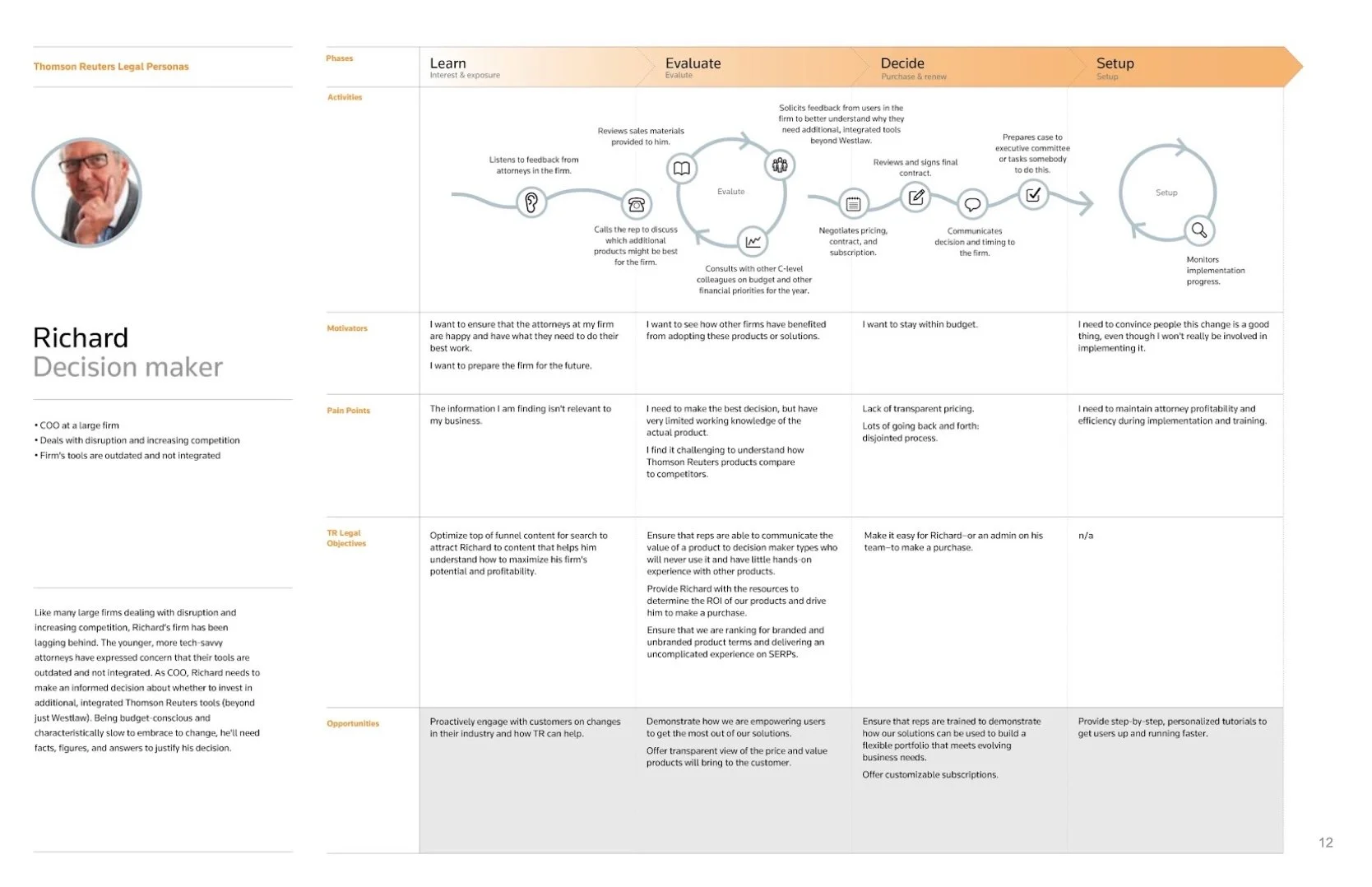Creating users personas & journey maps for a site replatform to AEM
While working as an information architect and later UX designer (after receiving a promotion) for Thomson Reuters, I helped to guide the redesign & replatform of legalsolutions.com from Hybris to Adobe Experience Manager (AEM). As part of this process, user personas and journey maps were created to keep the needs of the various users at the forefront of our design decisions.
Creating users personas
I create user personas to reflect various user types, pinpointing who they are and what they do with products in relevant contexts. I typically create user personas from the available data (qualitative and quantitative) and user interviews to understand user characteristics, needs, goals, and to gain valuable insights into user journeys.
While working at Thomson Reuters, we constructed four user personas that served as the foundation for our redesign efforts. Through user research, we quickly learned that the buying process for legal software at law firms was often a very complex decision that involved multiple stakeholders. To put it another way, buying legal software is not an impulse purchase made by a single person. Rather, it is often a decision by committee.
We had to account for 1) the actual users of the software, 2) the law firm’s decision makers who ultimately decide on the software but don’t use it, 3) users who might use the software and have a big role in choosing it and 4) users who ensure that the software runs smoothly, is implemented correctly, etc.
Without question, having these user personas created helped to keep our design efforts highly user-centered. It was beneficial as we collaborated to refer to specific user types to help us decide on design directions. For example, in a meeting, I might say something like: “We are talking a lot about alleviating Richard’s concerns about budget, but have we considered how much more efficiently the software will help Roxanne perform her job duties?” To me, this is the benefit of creating user personas - they keep users at the forefront of decision-making.
Journey mapping
Nielsen Norman Group defines a journey map as “a visualization of the process that a person goes through in order to accomplish a goal.” I design journey maps by identifying a series of user actions and then representing them in a visual timeline. In addition, the timeline contains user thoughts and emotions in order to create a narrative.
The following journey map is a visualization of the process that we determined that our persona, Richard the Decision Maker, undertakes when going through the buying process for legal software at his firm. In this journey map we outlined Richard’s activities, motivations, pain points, objectives and identified potential opportunities while grouping them into four high-level phases.
What I love about journey mapping is that once you create them, you can often very clearly see where your personas engage heavily and not-so-heavily throughout the process. For example, notice all the white space that emerges in the “Setup” phase compared to the “Evaluate” column. We can clearly see from this exercise that Richard’s journey has little to do with the setup & implementation phase so we tailored our messaging accordingly.
Visualization is a powerful concept and journey maps are a very effective and important aspect of my UX design process.


